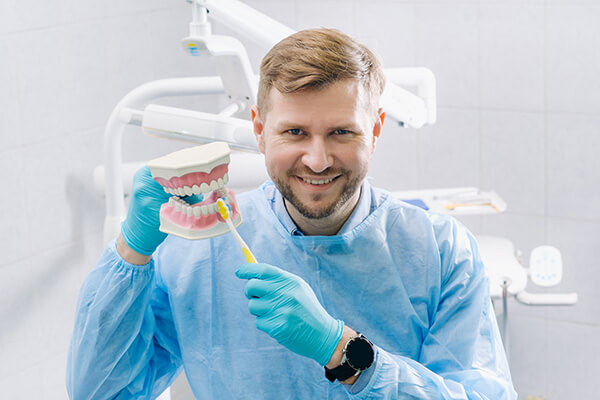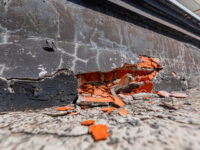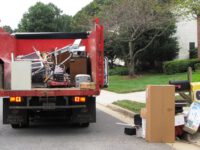How to Tell If Your Toothache Is an Emergency
Emergency Dentist Las Vegas is specially trained to handle urgent oral care concerns promptly. They can help prevent and treat injuries such as a cracked tooth, a dental abscess, or a knocked-out tooth.
You can save time and money in the long run by seeking prompt treatment for a dental emergency. The following are the top 10 benefits of seeing an emergency dentist.

Toothaches are a common dental issue. They can range in severity from mild discomfort to throbbing pain that makes it difficult to concentrate or sleep. In some cases, a toothache can indicate an emergency situation that needs immediate treatment by an emergency dentist. In other cases, a minor problem can be easily managed at home with over-the-counter painkillers or treatments. Here are some tips to help you determine when your toothache is an emergency and when you should visit an emergency dentist.
The majority of toothaches stem from an inflammation of the center portion of a tooth, called the pulp. The pulp contains nerve endings that are very sensitive to pain. Dental cavities, a damaged jaw bone, or trauma to the tooth may cause this inflammation. Infections, gum disease, and even stress can also cause this painful sensation. The pulp can also become irritated when eating or drinking foods that are extremely hot, cold, or sugary.
An over-the-counter anti-inflammatory medication is a good way to manage a toothache. Most medicine cabinets contain a variety of non-steroidal anti-inflammatory drugs (NSAIDs), such as ibuprofen or naproxen. Taking one of these medications can ease the discomfort and reduce swelling. Another at-home treatment is to rinse or gargle diluted hydrogen peroxide. This can help to kill bacteria in the mouth, which could be causing the pain.
If your toothache is not from an obvious source, or if it continues to throb for more than 12 hours, you should see an emergency dentist right away. A throbbing toothache may indicate the presence of an abscess in your tooth, which is a serious dental concern that requires immediate treatment. You should also seek immediate care if your tooth has been chipped or broken.
There are many ways to avoid a toothache, including maintaining proper oral hygiene by brushing twice daily and flossing once a day. Additionally, it is important to get regular checkups with your dentist, so they can detect problems early and treat them before they become a major dental problem. You should also make sure to eat a balanced diet and drink enough water to stay hydrated.
The most common dental injury is a chipped tooth. These chips can range from unnoticeable to excruciating pain, depending on the severity and location of the fracture. When patients experience a chipped tooth, it is essential that they call their dentist right away to schedule an emergency appointment. During the emergency visit, the dentist will determine if the broken tooth can be saved or if it needs to be replaced entirely.
Before the visit, it is important that patients rinse their mouth gently with salt water to clean the area. They should also be careful not to swallow any loose tooth fragments. Using a piece of sugarless gum or paraffin wax, patients can cover the end of the broken tooth to prevent it from cutting their tongue, lips, or cheeks. If there is any bleeding, applying gentle pressure with a clean piece of gauze or cloth can help control it. Taking over-the-counter pain relievers can help reduce any discomfort until the patient can see their emergency dentist.
Patients should be careful not to chew on the chipped teeth and should try to eat soft foods that will not hurt the injured areas. In addition, patients should be sure to use an ice pack or apply a cold compress to the affected areas to reduce swelling and pain until they can see their emergency dentist.
If a tooth has been chipped but does not appear to be damaged or sensitive, the emergency dentist may recommend surface fillings or crowns. A tooth-colored filling can make it easy to cover any chips, cracks, or breaks while giving the tooth a natural appearance. A crown is a more permanent solution that will encase the entire tooth in a new, strong cap that will prevent further damage or infection.
The worst case scenario is a cracked tooth that has fractured through both the enamel and dentin to expose the root of the tooth. This is the most severe type of tooth injury, and it should be treated as a dental emergency. Pain and bleeding are often the first signs of this type of break, but bacteria can get into the pulp chamber as well. If left untreated, this can lead to infections that require antibiotic treatment.
If you’re experiencing severe pain in a tooth that won’t go away, or have other symptoms of a dental abscess, visit an emergency dentist as soon as possible. An abscessed tooth is a pus-filled pocket in the mouth that typically results from a bacterial infection. Tooth decay, periodontal disease, or a cracked tooth can allow bacteria to infect the pulp in the center of a tooth that contains nerves, blood vessels and connective tissue. This can lead to the death of the pulp, causing a resulting plethora of pus that builds up in the tip of the root and jaw bone and forms an abscess. This pus is often painful and may cause a foul taste or smell in the mouth.
A dental abscess can also lead to serious health issues if it is not treated. If the pus from the abscess leaks into the bloodstream, it can lead to a life-threatening condition called septicemia. In addition, the infection can spread to other parts of the face and neck.
An emergency dentist can drain a dental abscess, allowing the pus to escape and reducing the pain associated with it. To do so, the dentist will create a small incision in the abscessed tooth and then cleanse the area with a salt water solution. A root canal or tooth extraction may also be recommended if the abscess is near the roots of a tooth and is affecting the surrounding teeth.
The best way to avoid an abscessed tooth is to practice good oral hygiene and have regular dental exams. These can prevent bacteria from entering the pulp in the tooth, leading to an infection. If you develop a toothache, visit an emergency dentist immediately to reduce your chances of an abscess and to treat other related problems like a broken or chipped tooth. Taking over-the-counter pain relievers and rinsing with salt water can control the pain until an emergency dentist sees you.
Dental fillings are a quick and effective way to repair cavities. The emergency dentist will remove the decayed portion of the tooth, clean and disinfect the area then fill it with an appropriate dental material to restore strength to the damaged tooth. But even a well-placed filling can fall out or break, largely due to the stresses placed on a tooth by chewing and biting. This can be caused by teeth grinding or clenching, certain foods, and physical activities such as sports. A lost or broken filling isn’t considered a dental emergency in all cases, but the integrity of the tooth is at risk and patients should seek treatment as soon as possible.
Loose or lost dental fillings can lead to infection and expose the tooth to further decay. In the event of a missing or loose filling, you can prevent further damage by avoiding putting pressure on the tooth, covering it with over-the-counter dental cement if you don’t have sensitive teeth, and chewing on the opposite side of your mouth. You can also take over-the-counter ibuprofen or another nonsteroidal anti-inflammatory to reduce pain and inflammation.
If the tooth is still painful, try using a cold compress or ice pack to relieve swelling and numb the area. Clove oil or a whole clove may help numb the tooth as well. The quickest way to find an emergency dentist is to check your own dental insurance website for a list of in-network providers that offer emergency services. You can also use the Healthline Find Care tool to find options in your area.
An emergency dentist is a specialist that has additional training to treat unexpected oral injuries and concerns. In addition to providing immediate relief, they can also save your tooth and prevent further complications, such as a gap in the jaw that could trigger bone loss. Although tooth extraction is occasionally necessary, it’s not ideal, since it can trigger other issues in the jaw and leave you with a space that’s difficult to fill. By addressing dental emergencies promptly, you can avoid these complications and restore your smile.




